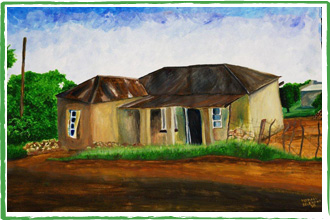The past Saturdays I have been volunteering as a Maths tutor for the Upstart Youth Development Project. As far as many of my beloved learners were concerned, Maths wouldn’t reside in a planet designated for languages. Maths would reside in a different and very distant planet with a hard to pronounce name— I would imagine, to banish it properly from the memories of people.
I found this disappointing but not entirely unexpected. So, in a slightly determined fashion, I decided one of my key priorities will be to help the learners locate Maths within the language planet. And, of course, allow them to gradually come to terms with the fact that another planet for Maths is as non-existent as Pluto.
In pursuit of this priority, I found myself in an unusually happy space where my politics intersected with Maths. We were discussing functions, which naturally one can’t discuss without establishing an understanding of relations: for a function is but a special relation. Different examples were given to describe multiple everyday relations. Most of these examples were not very exciting until we explored a relationship between Dr. Jacob Zuma and Mr. Mbogeni Ngema. Both men are polygamists and whether or not they have gone on record as pro-patriarchy is detail we suspend. I asked my beloved learners whether a polygamous relationship qualified as a function.
First, there was a reasonable pause in the classroom, as the learners work out whether such a relation qualified as a one-to-many or many-to-one relation. Then, we proceeded to do the obvious, represent the relation on the board, like as shown below:
Almost feverish with excitement, I realised that we had proven mathematically that polygamous relationships are not functional. And, of course, I used the moment productively. I brought into the discussion the idea of “contexts” as sensitively as I could, to explain why the two relational sets may not be swapped around. I argued (without using the term patriarchy) that the instinct to put the male set before the female set defines a very particular context to understanding polygamy as a cultural practice; a context in which a man is defined, for example, as the head of the family—ergo not an equal partner to a woman. I stressed that their instinct was tied to that context, as such, swapping of the sets will lead to a contradiction.
These are high school learners who are familiar with topics like ratios; so it really wasn’t difficult to leverage on this familiarity to cement my point. I simply reminded them that in ratios, the ratio of males to females in the classroom is different from that of females to males —a fact that has been drilled into them by their teachers and one I may need to revisit later with them.
With my learners reasonably convinced that the sets could not be swapped, the conclusion stood: polygamy, expressed in English, is not functional despite what the patriarchs may think!
I remain delighted by the conclusion. In entering what I regard as my political space, I managed to communicate, in subtle ways, how concepts are incrementally developed in Maths such that it eventually becomes possible to bring the idea of contexts to answering questions. I also found the language to communicate the embedded ethics in Maths. As a result, I was even able to dutifully explain the rationale I (and many other beautifully minded Mathematicians) use in marking:
You present me with just an answer and no work (or context to appreciate your thought process)…I will give partial marks on paper but I will certainly give full marks in my heart. Not in my (beautiful) mind but in my heart because that will be a loving act of instilling the value of labouring for your rewards.
This Saturday I will be playing around with the idea of restricting the domain of functions, I hope the idea of contexts will become even much more clearer. In the meantime, I am just looking forward to finding more “inspired” examples that may be useful in concretising concepts and the view of Maths as a language of variables, sets, functions, etc.


